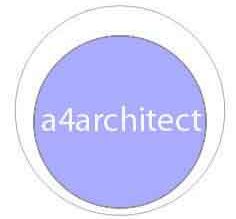Analysis of the cost of construction of a concrete slab in Kenya. Comparison between prefabricated and in situ.
Concrete slabs can either be constructed as prefabricated, meaning, they are fabricated off the site and transported to the site for erection.
Prefab concrete


They can also be cast in situ, meaning that a form work to retain the concrete mixture is set up and concrete is poured into the shape to form the slab.
Lets check out the costs for both situation.
In Situ concrete.

A concrete ratio of 1 to 3 to 6 for cement, sand and ballast produces class 15 concrete, mostly used in mass concrete to level out foundation footings.
A concrete ratio of 1 to 2 to 4 for cement, sand and ballast produces a much stronger class 20 concrete , mostly used for suspended slabs, beams and columns, which are self supporting.
In Kenya, the fundis and contractors mix 1 bag of cement to 3 wheelbarrows of sand to 4 wheelbarrows of ballast.
This is a ratio of 1 to 6 to 8.This is a weaker concrete strength than the recommended class 15 hence not suitable for high-rise buildings.
This can hold for light structures such as maisonettes. In the case where fundis and contractors don’t have engineering consultancy to guide them, they may mistakenly use the same ratio for a building with more than 2 storey levels, leading to building collapse.
In buildings higher than 2 storey levels, the fundis and contractors use buckets to measure.
The ratio is for 1.5 buckets of cement to 5 buckets of sand to 8 buckets of ballast for slabs and beams, which carry lesser weight than columns.
This makes out a ratio of 1 to 3.3 to 5.3, which is closer to class 15 concrete strength.
For columns, the cement ratio is increased to 2 buckets of cement , 5 buckets of sand and 8 buckets of ballast.
This makes out a ratio of 1 to 2.5 to 4, close to class 20 concrete strength recommended.
In this case, lets work out the costs using the recommended ratio of 1 to 2 to 4 for high rise structures.
We will assume a 1m2 surface of concrete slab, 150mm thick.
This surface has a volume of 1m x 1m x 0.15m=0.15m3.
This volume has the below volume of sand, cement and ballast.
Cement.
Cement volume=0.15m3 x 1/7=0.021 m3 of cement.
Weight of 0.021m3 of cement.
Cement density is assumed to be 1,500 kg per m3.
0.021m3 of cement will weight 32kg.
A 50kg bag of cement costs kes 700.
32kg of cement will cost kes 448.
Sand.
Sand volume=0.15m3 x 2/7=0.043 m3 of cement.
Weight of 0.043m3 of cement.
Sand density is assumed to be 2,000 kg per m3 when wet.
0.043m3 of sand will weight 86kg.
A tonne of sand costs kes 2000.
86kg of cement will cost kes 172.
Ballast.
Ballast volume=0.15m3 x 4/7=0.086 m3 of cement.
Weight of 0.086m3 of cement.
Ballast density is assumed to be 2,000 kg per m3 when wet.
0.086m3 of ballast will weight 172kg.
A tonne of ballast costs kes 2000.
172kg of cement will cost kes 344.
Total cost.
Total concrete cost will be cost of cement,sand ballast =kes 964 per m2 pf concrete.
Add cost of water and labor, say 30%=kes 1,250 per m2.
Add cost of steel reinforcement.
Assuming a bottom reinforcement of Y10 at 200 mm centre to centre and top reinforcement of Y8 at 200mm centre to centre, this will be as follows
Y10
12 Meters long @ kes 600 per 12 meter length.=kes 600
Y8
12 meters long at kes 400 per 12 meter lenght=kes 400
Cost of steel per m2 of slab=kes 1,000.
Cost of steel plus concrete=kes 2,250 per m2.
Cost of formwork.
Formwork can be hired or purchased.
In case of purchase, Grivellia timber is mostly used.

This is because the wood from this tree tends to warp and crack hence cheap compared to cypruss which is more expensive and more long lasting.


Grivellia wood 6 x 1 foot costs kes 21 compared to cypress at kes 34 per foot for the same length.
Grivellia can only be used for formwork once.
In a 1m2 slab, this will cost as below.
6 inches convert to 0.25m
1 foot converts to 0.3m
6 X 1 Timber has a surface of 0.075m2, costing kes 21.
1m2 surface will cost kes 280.
Add labour and nails, say 30%=kes 360 per m2.
The total cost of in situ concrete slab will now become kes 2,250 plus kes 360=kes 2,610 per m2.
Cost of prefabricated concrete slabs.
The selling price for eco slab prefabricated slabs is kes 1,600 per m2.Add cost of cement screed to level the surfaces and plaster at the bottom part of the slab. This estimates to kes 2000k per m2.
Conclusion.
Casting the slab in situ is at a higher cost than buying prefabricated slabs.
Francis Gichuhi Kamau, Architect.


Leave a Reply